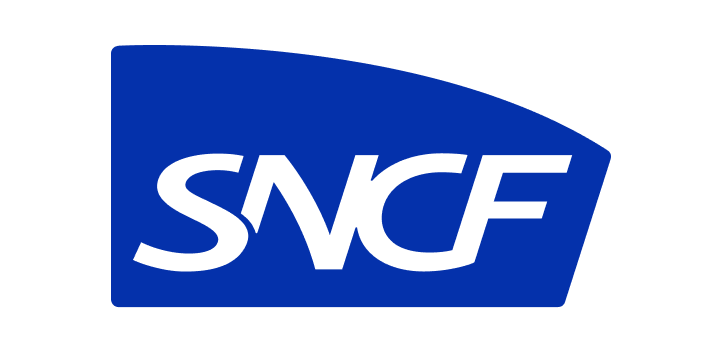NFTs are nearly as old as Bitcoin itself, their first uses started around a decade ago. However, new uses, as a direct consequence of the great increase in interest, are appearing in our lives.
So, what is the interest around these NFTs? And how are they concretely used today? Let’s see what is beneath.
I- The original digital version
“Keep the paper original please.”
This is a classic sentence when referring to paper documents such as invoices, diplomas or contracts.
In the world of paper and the handwritten signature, the original is supposed to be conserved carefully, and since the digital age we have never had a true technical equivalent to attest that a version is the original. The constant “copy and paste” of a digital file makes it very difficult, if not impossible, to find its first version.
Fact time ! When you send an e-mail with an attachment, you are in fact sending a copy of the document on your computer. The simple fact that the document is on your computer and on the recipient’s computer proves that it is a copy.
Today, to prove the originality of a digital document, we use a trusted third party, such as the “Caisse des Dépots et Consignations” in France via their archiving service. It guarantees the storage of one of these copies in an unalterable way to be able to prove its originality at anytime.
The paper original is strong enough to guarantee its original uniqueness. It is widely used today. However, there are certain points of caution about the characteristics of a paper original.
Indeed, it is complex to transfer an original physical document, as it requires both people to be in the same place at the same time. Moreover, it is hard to know who had the document in their hands prior.
Proving that an original is the original also gets tough, a copy could easily made and there is often no mention of the original character of the document.
Finally, it is possible to destroy a physical document. Thus, its value and usefulness become null and void.
Since 2009, in the same way as paper, the NFT allows a digital document to certify of its own uniqueness and originality. The advent of public blockchains with the ability to tokenize has launched the era of digital uniqueness where each computer element can now have a unique character.
A huge ocean is opening up to tokenize or “NFTise” our world and our lives.
II — What does Niftization bring us?
So in concrete terms, how can we leverage the power of the NFT? The following points are not intended to be exhaustive, but highlight the main possible uses.
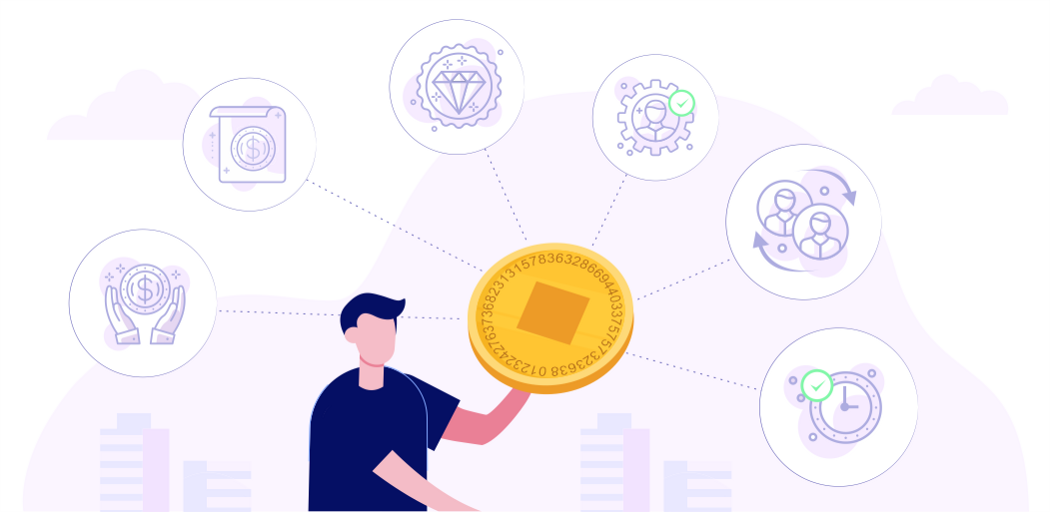
- PROOF OF ORIGIN: a NFT is defined by its creator, thus bringing certified data on its origin. It permits to verify an author hence giving rise to use cases like royalties.
- QUALITIES: It is possible to attach immutable qualities to a NFT, that will follow trough its life.
- TIME STAMPING: each action of a NFT (creation, transfer, modification) is recorded on a blockchain, which brings immutability and a certified proof of existence at a specific time. It can for example be used for a proof of anteriority of creation.
- POSSESSION: An NFT can only be held by one person at a time as it cannot be duplicated. This bring a certified proof of possession. That possession can be then seen as ownership, responsibility or any other characteristics depending on the use case of the NFT.
- TRANSFERABILITY: a NFT can be transferred from one person to an other (with or without restrictions), and conserve its characteristics. This is highly interesting for certain uses like guarantees, insurances, advantages, etc… that could be transferred with the NFT.
- INDESTRUCTIBILITY: a NFT cannot be erased. It can however be burnt — by sending it to an invalid address — but all its history will remain forever, enforcing the other qualities, and bringing new possibilities.
What does it mean to hold an NFT? Legislation-wise.
The transfer and possession of the NFT can allow :
- To validate a complete or partial transfer of ownership depending on the token and the structure of the law applicable to the NFT. (It is still necessary to determine whether the NFT corresponds to full (usus, fructus, abusus) or partial ownership of the object).
- to prove the holding of an NFT by its time stamp and history
- to prove rights, obligations, or responsibilities transfered
(Open question) What about the NFT and property rights? The use of NFTs requires a clarification of its related property rights: the right to use (usus), the right to enjoy (fructus) and the right to abuse (abusus).
In conclusion, the contributions and changes brought about by the NFT are much more powerful than a simple digital version of the original; its characteristics offer multiple possibilities, “exceeding” what we do today with paper originals.
III — Exploring the current use cases
We thought that after speculating on the future use cases you would be thinking “ok, but concretely, what can we do now?”. And you are right, so let’s get back to the present.
The characteristics of an NFT open up an ocean of possibilities. Some use cases are already available and they go far beyond the field of Art, which spontaneously comes to mind when we talk about NFTs.
Here is an overview:
- Properties and virtual worlds:
In these applications, descendants of “Second Life”, users buy plots of land which they can then build, explore and monetise.
Decentraland and Cryptovoxel are the best known applications. Decentraland offers a virtual world in which users buy NFTs of land (LANDs) on which they can travel, build and monetise. The number of LANDs is limited and each unit is 16x16 metres.
Here, one NFT represents one parcel of land.
Here is an example of a parcel:

We can bet that, in the future, NFTs will also cover physical real estate.
This category is quite different from art. We are talking about collectibles such as Panini cards or Pokémon cards that we have been collecting since our childhood in the physical world. Several projects propose this type of collection, more or less sticking to the physical equivalent we already know.
For example, Sorare offers digital trading cards officially licensed by a footballer for a particular football season. We can say that this is a digital form of Panini cards. Thanks to blockchain technology, fans can collect their favourite players with proven rarity (fixed offer).
MBappé’s card:
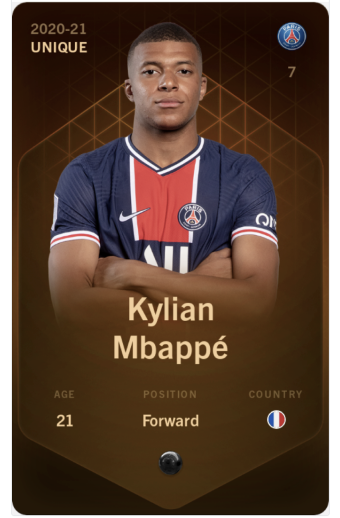
Another example that shows a superior offer of NFTs compared to physical objects: NBA Top Shot. These NFTs are videos representing important moments in the NBA.
Here, one of the properties of the NFT is the video, which is similar to a card collection in the physical world.
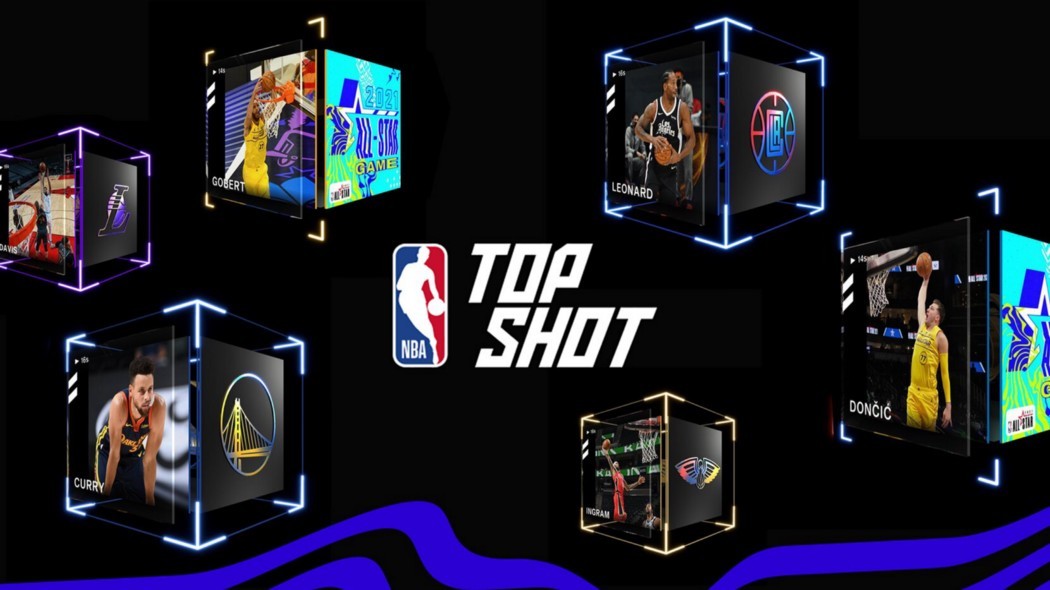
There are dozens of examples of different digital collectibles in every country. Some music groups also offer NFTs to collect your favorite singers or band members effigy.
One of the most obvious areas, yet continuing to amaze us, is of course Art. We have already introduced it in chapter 1. Several types of art NFTs are available since 2017 and some platforms are already present to offer you the sale or purchase of these NFTs as well as their creation.
Among these platforms, we can mention OpenSea and Rarible. They are used to create NFTs with an extremely simple process that makes it accessible to those who have little to no experience with NFTs.
Feel free to check them out (as well as MakersPlace, SuperRare, KnownOrigin, …), as some of the works are well worth a look.
FUNFACT: The most expensive art NFT to date (May 2021) was made by the artist Beeple. It is a collage of 50,000 works made over 14 years. It is the first NFT work sold by Christie’s, and it fetched $69.3 million.
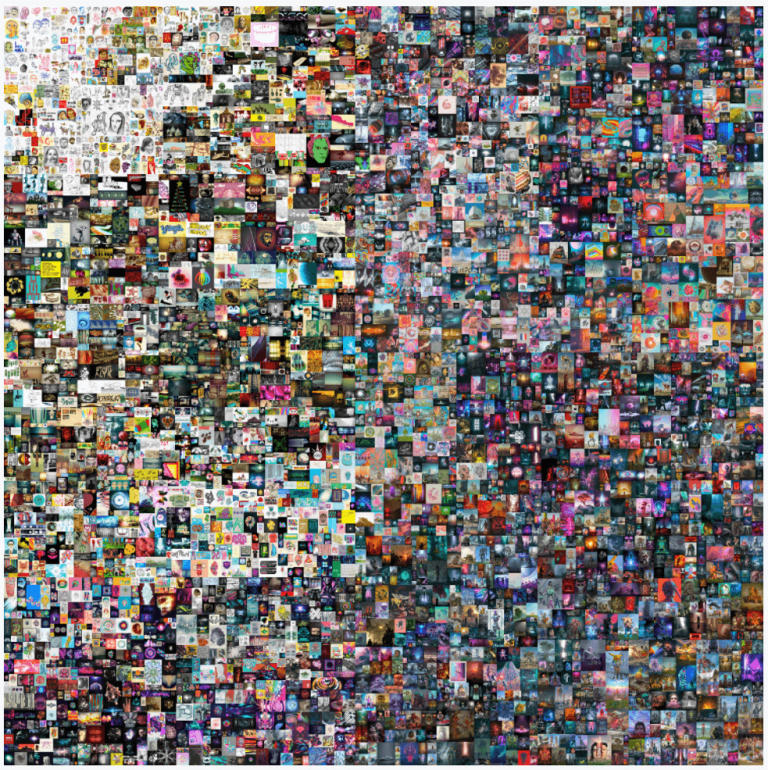
NFTs can also be used in video games. Imagine owning the NFT of a rare sword that you could use in several games or resell later?
Using NFTs is one of the challenges of the following project: Axie infinity Shard (AXS). It is a collectible game based on Ethereum. Axies are NFTs, characters that you own and control. You can store them in your personal wallet, transfer them or trade them with other players.
Here the NFTs are elements of the game.
As of February 2021, AXS has over 27,000 active players.
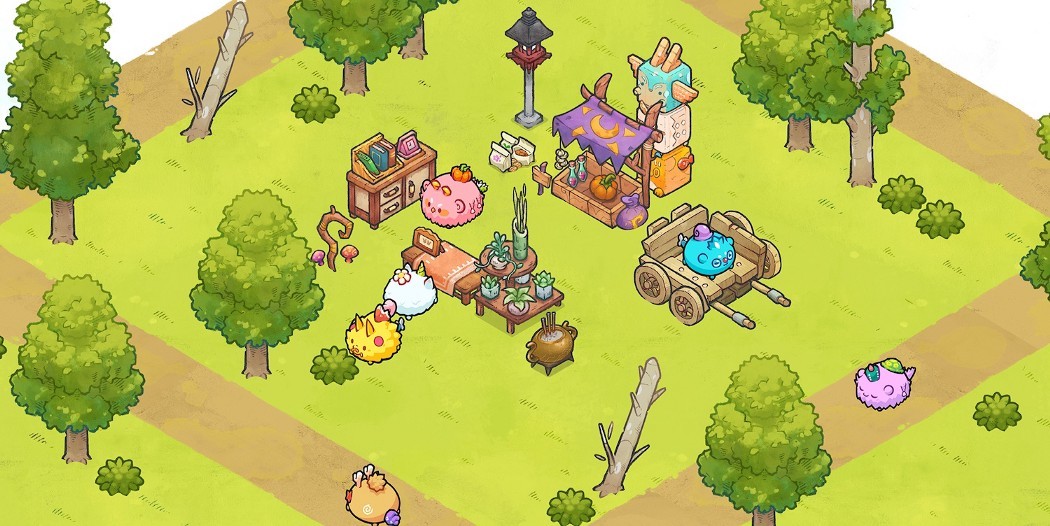
There are other video games using NFTs and the range of possibilities seems immense in an already virtual world
The digital world is used to profusion, and one of the things we like to have uniquely is an avatar that represents us, be it the image we use for our profile, or the “digital self” in a virtual world.
In the NFT version, we have the possibility to create a limited number of avatars, all of which will be unique. One of the best known examples of this kind of use case is the CryptoPunks. Of the 10,000 characters generated in 2017, no two are identical and each one can be officially owned by a single person on the Ethereum blockchain. Whoever owns one can therefore officially be the sole owner of that avatar and will be able to use it in blockchain applications that will require proof of ownership.
FUNFACT: Originally free, these small pixelated avatars are now recognised as Ethereum’s first NFT, which has pushed their price up exponentially. CryptoPunk #7804, a pipe-smoking alien NFT, sold for a record 4,200 ethers (ETH) — the equivalent of $7.56 million (price as of 11 March 2021).

Recently the studio behind CryptoPunks launched Meebits, 20,000 unique “next generation” avatars that can be used in virtual worlds and games.

The music world has an intermediary problem, they are usually the ones who get the majority of the money, especially with the new streaming world where it is complex for an artist to get anything.
Blockchain was initially seen as the solution to these issues, creating new platforms where revenues would be more direct. But it didn’t really work out. The advent of NFTs is a game changer: artists can now offer unique digital elements directly to their fans and be compensated for it. Kings of Leon recently released an NFT album, and others such as Madeon and Eminem are offering graphic mini music videos on Nifty Gateway.
But it is also possible to go further by using this new digital tool to vary the musical possibilities, AsyncArt has thus invented “multi-layer” albums where the possession of such or such NFT will allow to select the tracks to listen to a mix which will be different in the end:
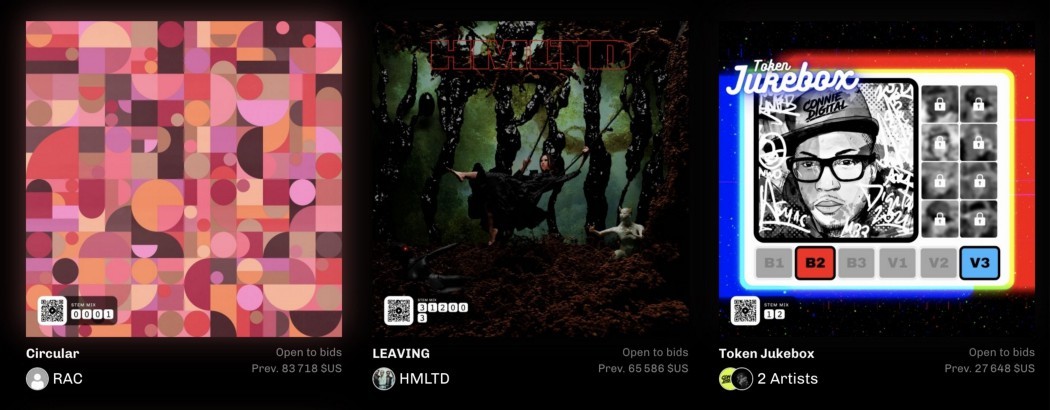
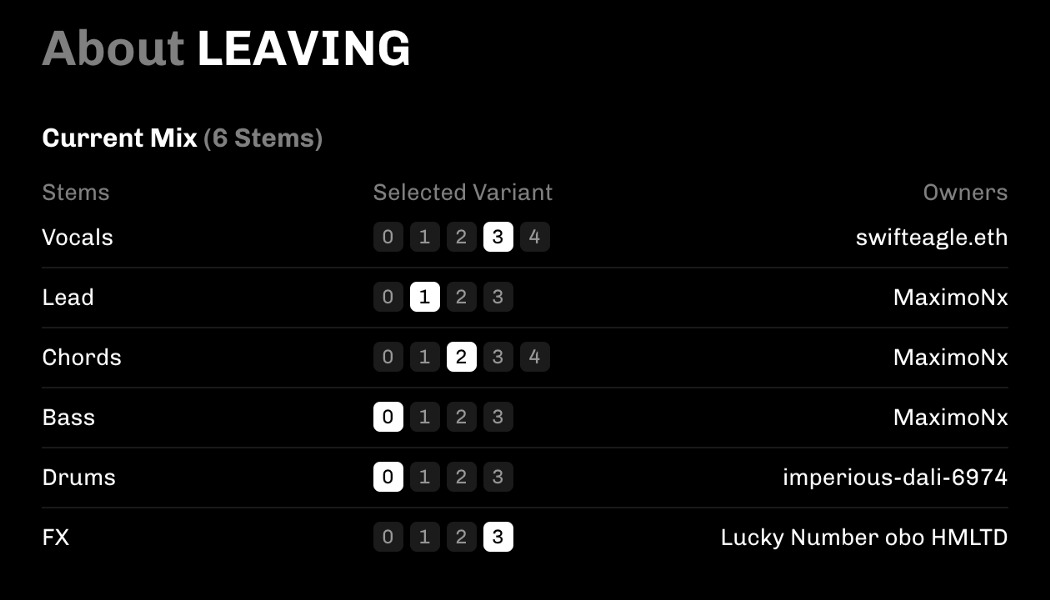
We could not talk about NFT use cases without mentioning for the first time our Ownest use case: Logistics. Chapter 4 will go into more detail, however we will introduce you to the mechanism proposed by Ownest. Our solution allows us to create an NFT for a physical product and to transfer the physical product & NFT throughout the supply chain. Thus, holding this NFT, which is the digital equivalent of the physical object, makes you responsible for the product (and its potential loss or degradation).
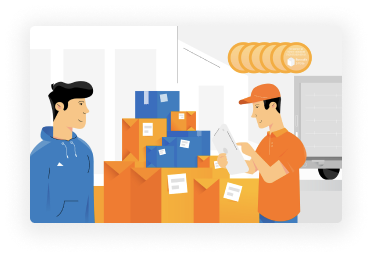
To link back to the previous elements on property rights, one must therefore remain vigilant about what one is buying. It is the creator or the platform generating this NFT that specifies the properties of the latter and therefore its related rights and obligations.
For example, when you are sold an original NFT of an object, the qualification of this NFT is of course important but not as much as its creator. In order to differentiate between a real and a fake NFT of an object, it is enough to look at who is its historical creator and its legitimacy in relation to the object.
IV — Towards the niftization of our world and our lives
The original paper has a real value today and NFTs allow us to digitize them. But then what can we digitize?
IMAGE
Let’s project our personal lives, via NFTs:
Tomorrow, from your mobile phone, you will have access to all your NFTs in possession, classified by category and sub-category:
- Title deeds for all the possessions you own (house, car, fridge, watch, sofa, TV, furniture with sub-options for each possession like :
→ Certificates of authenticity
→ Guarantees for each product.
→ Sub-order: for products that you have paid for and that are in the process of being manufactured.
- Identity and Visa: all your official ID cards and passports but also any other identity, proof of identity or residence generated by different companies, services or people. We can use some NFTs rather than others depending on the subject and the person. We will also find any visas or authorizations issued.
- Qualifications & Diplomas: for all the qualifications you have obtained but also the small qualifications you will acquire over time.
- Reputation: all the reputation NFTs (ratings) that people have given you in the course of your exchanges (pro, Uber, Airbnb, purchase on internet). They can be very useful in order to get discounts or to prove your good faith.
- Loyalty points: in the same way as reputation for advantages with shops or to gain access to certain sales.
- Cash register tickets and receipts: a double advantage for business and personal use to justify expenses to your company and to the tax authorities.
- Tickets: for all the cinema tickets and concert tickets that you have bought and that you have to hand in on the day. This is also where you collect your NFTs for the waiting lines.
- Rental: Same principle as for property but for goods or objects that you rent.
In professional life, there would be the same mechanism at the level of the person, the company or the state with :
- Contracts: Representing all signed contracts creating obligations and/or commitments.
- Shares and Bonds: the company shares you hold or the state bonds.
- Certificates: to prove your Iso certifications, etc…
- Orders: Finding your order NFTs, which will act as a commitment from your customers who will pass them on to you when signing for example.
- Invoices: for your accounting and to justify certain purchases to the authorities.
- Authorizations & Quotas: for products or operations that are controlled by Quotas, this is where you will get the quantified exploitation authorizations.
- Tasks & Projects: a project management can be completely broken down into NFTs for each task. Each task is assigned a task and each task in turn transmits the NFT. It is a standard and universal tool for task management and project progress.
- Circular economy: Tomorrow all products will be built by engineers thinking in terms of a cycle of use with their “primary use” then “secondary use”, etc. For some products the consecutive use will be the same. For some products the consecutive use will be so determined that we will share with the user 1, 2 and 3 the cost of purchase. This is where your share of usage and ownership will be found.
There are, of course, many other areas that will use digital uniqueness as a basic and obvious tool of their business. The question remains as to how quickly the various industries will adopt NFTs and NIFTIze their business.
Logistics is likely to be at the forefront of this revolution, so see you in our next chapter.
Ready for this future? Let’s look at what we can do in logistics in our chapter 4.
![Cdiscount 2022 04 01 174830 mhxm]()
![Scnfbis]()
![Saint Laurent]() Company
Company

